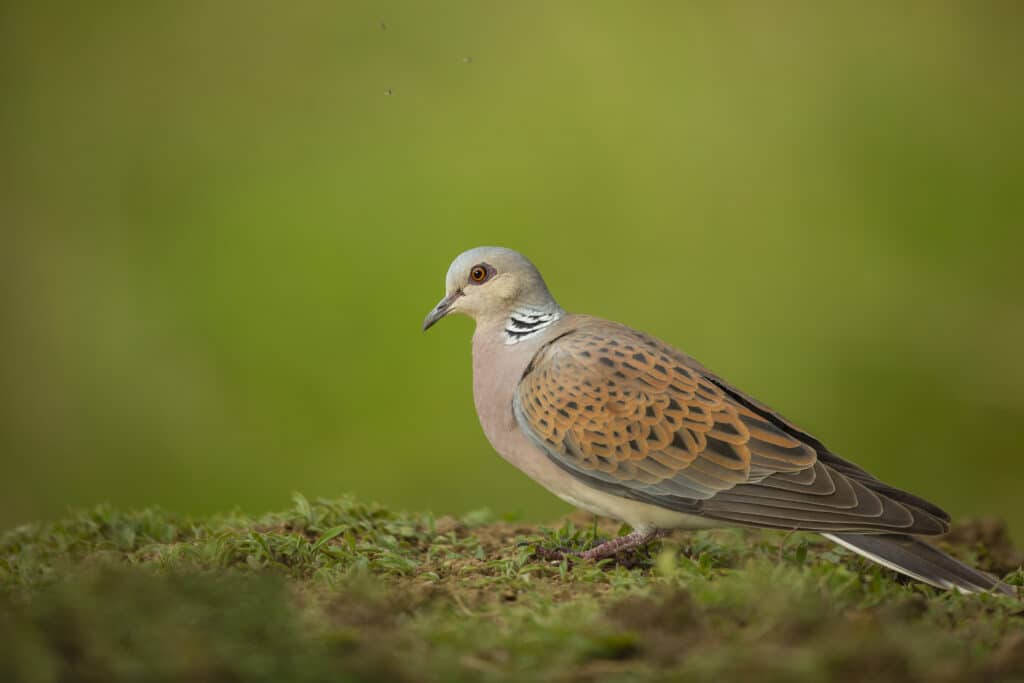When Doves Die
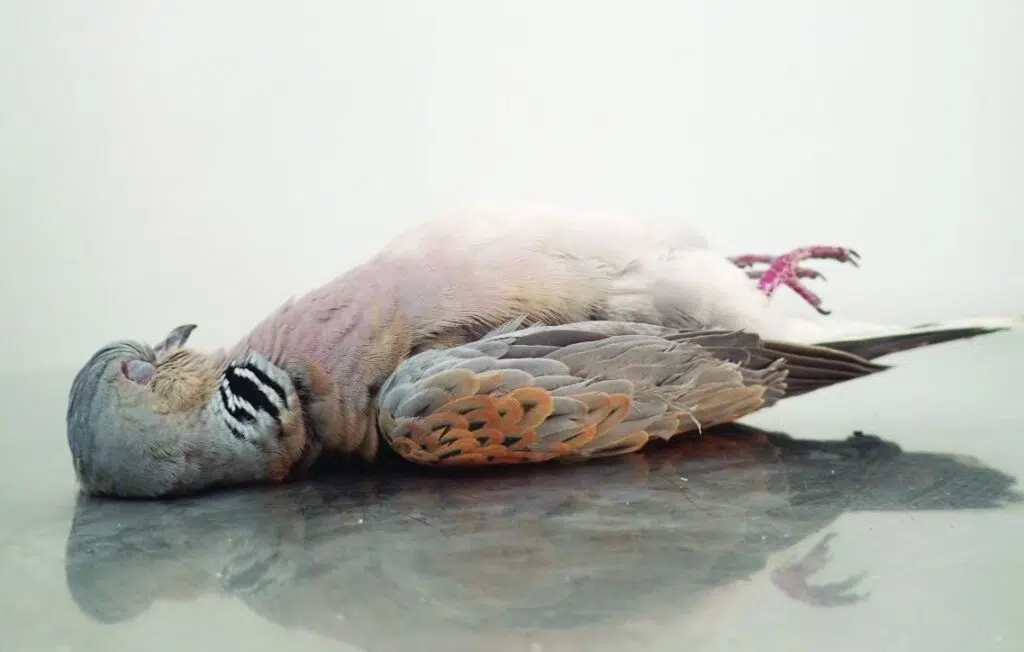
Each year, around 25 million birds are illegally killed across the Mediterranean – a region where many, such as the declining European Turtle-dove, are undertaking already perilous migrations. BirdLife is committed to helping countries halve this figure by 2030.
By James Lowen
Header image: Illegal killing has contributed to the population collapse of the once widespread European Turtle-dove © BirdLife Malta
I’ve seen horrible photographs of mass bird killings,” sighs Lilla Barabas, BirdLife Europe and Central Asia’s Flyways Officer. She’s not alone. Thanks to social media, we have all probably gasped in horror at the grotesque truths evinced by such shocking images. A European Robin immobile in a spring trap, its leg broken. A Eurasian Blackcap dangling, its feet glued to a branch. A Common Quail wriggling in an illegally set mist net, destined to become dinner. A towering pile of almost 1,500 European Turtle-doves, their smiling killers giving the camera a thumbs-up. Every single image is an indictment against humanity, a repudiation of governmental promises of ‘zero tolerance’ of illegal killing. And, for BirdLife, a call to action.
Annually, BirdLife estimates that a horrifying 25 million birds are killed illegally in countries bordering the Mediterranean Sea. They are shot by hunters, poisoned intentionally, snared in mist nets and glued to limesticks. Not one will fly again.
The victims include resident species such as House Sparrows, of which an estimated 4.7 million are killed each year. They also include migrants dealing with the stresses of a life on the move, such as European Turtle-dove – a globally threatened bird that risks emulating its distant relative, North America’s Passenger Pigeon, which was hunted to extinction by 1914.
The killing occurs throughout the Mediterranean, but it is not evenly distributed. The black spots besmirch Italy, Egypt, Syria and Lebanon, which collectively illegally slaughter 16 million birds every year. Not far behind, with half a million or more unlawful deaths, are Cyprus, France, Croatia, Greece and Libya. Meanwhile, the mortality rate – the number of birds killed unlawfully per unit of land area – reaches its terrifying peak in Malta. On this small island of just 316 km², almost 350 birds are killed per square kilometre. Every single year.
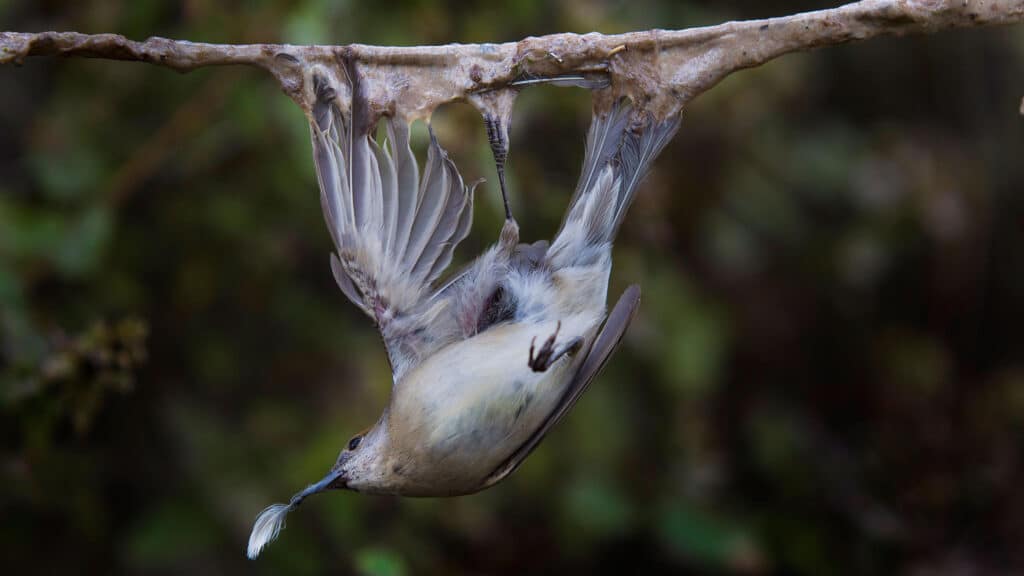
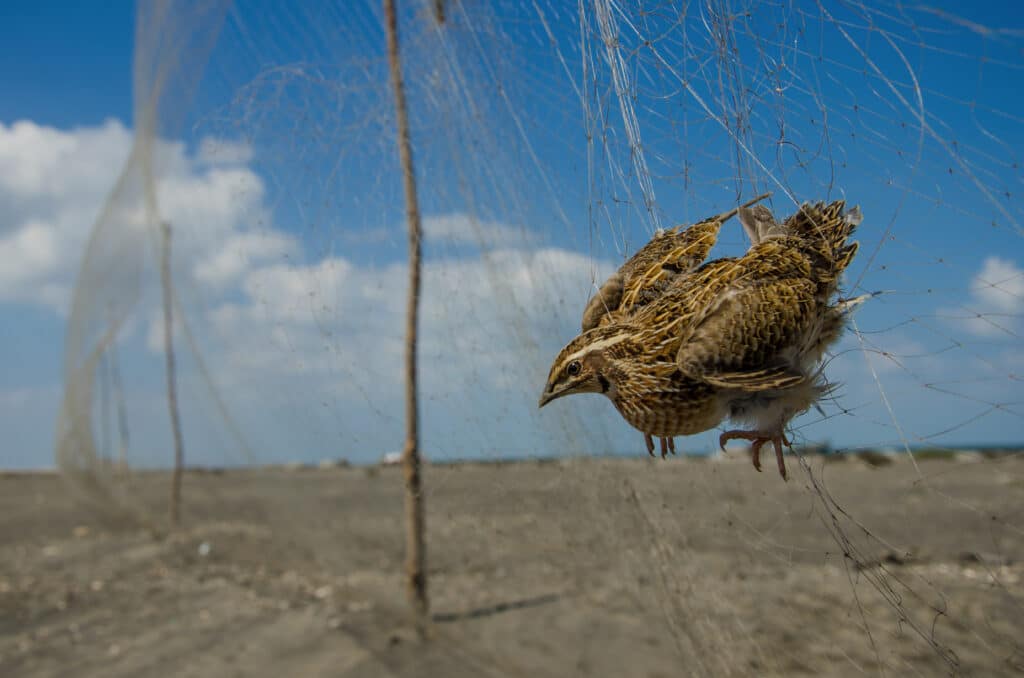
Root of the problem
In several countries, hunting is deemed ‘traditional’, even if its methods incorporate modern technology such as electronic bird callers. The practice is so deeply ingrained in Maltese culture that the legal hunting season there lasts nine months, triple that of other European Union (EU) member states. So-called ‘sport’ hunting is rife in Lebanon, despite having been banned since 1995.
Many birds are killed for domestic consumption – a source of wild protein. European Robins and thrushes snared in Italy’s Brescian valleys are sold to restaurants, which serve them in the dish polenta e osei. In Cyprus, the illegal wild bird trade generates €10m annually: a Lesser Whitethroat is worth approximately €5. Poverty drives hunting in some Egyptian communities, where autumn’s juxtaposition of passage migrants and open hunting season provides a lifeline.
Hunting can also generate income from tourism. On the Ionian Islands, local residents rent out top shooting spots to hunters from elsewhere in Greece. Despite being prohibited since 1985, about 70,000 turtle-doves are slaughtered here every spring. Lilla Barabas was “shocked to see a huge number of discarded shotgun cartridges, plus lots of hunting hides … but very few European Turtle- doves” when she visited Zakynthos last April.
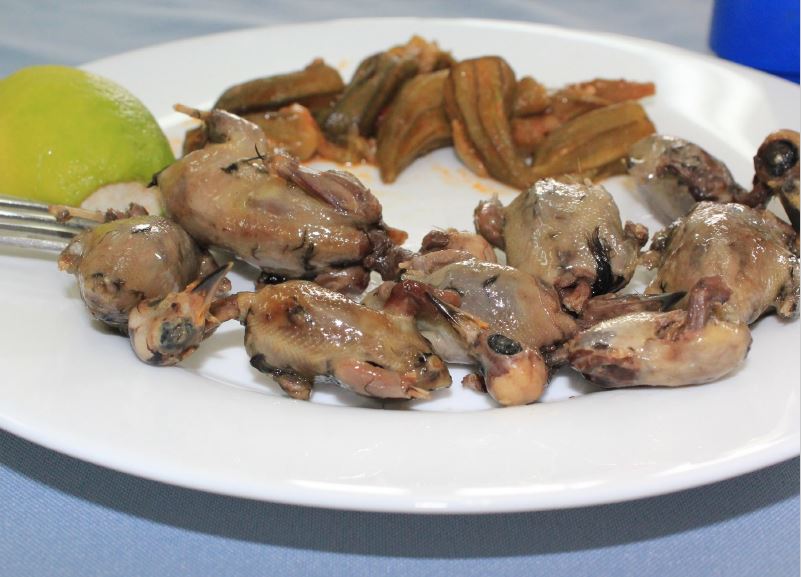
Doves in danger
Along its migration route from wintering grounds in the African Sahel to breeding areas north of North Africa, unlawful killing constitutes another nail in the European Turtle-dove’s coffin. Around 600,000 birds die annually in the Mediterranean alone. “The largest number of turtle-doves are killed illegally in Libya, Syria and Greece,” Lilla explains.
Prompted by their rapid decline in Europe (30-49% across three generations), Russia and Central Asia, BirdLife uplisted the species to Vulnerable in 2015. For a bird treasured in art and culture for millennia – from pulling the chariot of the Greek goddess of love, Aphrodite, to multiple cameos in Shakespeare’s works, plus one in a reading at Prince Harry and Meghan Markle’s wedding – this is both disconcertingly ironic and deeply sad.
The species’ population crash stems from the interplay of hunting, both lawful and not, with the loss of foraging and nesting sites due to agricultural change, and disease. This fatal combination renders it one of the world’s most threatened long-distance migratory birds.
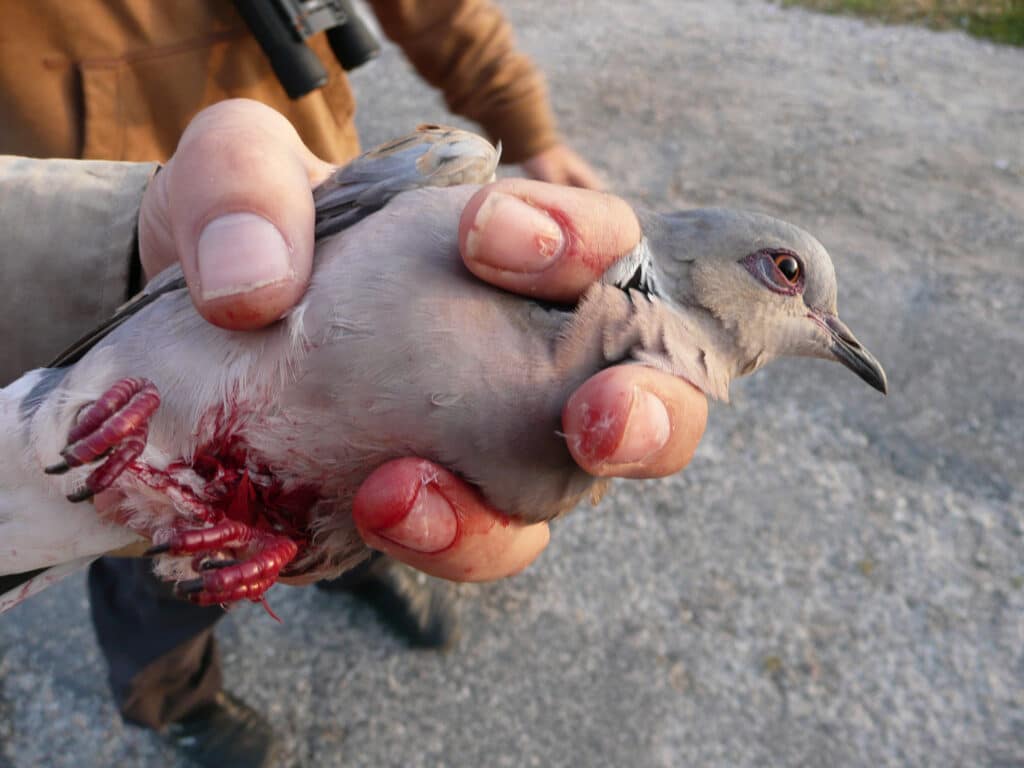
The mention of lawful hunting is pertinent. “Hunting of turtle-doves remains legal in several EU countries,” Lilla reveals, “and until recently, hunters in the EU lawfully killed up to two million turtle- doves annually, with the highest take being in Spain, Greece and Italy.” Perturbed by the species’ decline, the European Commission published a 10-year Species Action Plan in 2018. Until an “adaptive harvest management modelling framework” for lawful turtle-dove hunting was developed, it recommended a four-year hunting moratorium in the western Mediterranean and halving the take in countries along the central and eastern parts of the flyway. In 2022, the Commission proposed a zero take for the entire EU.
Although positive in theory, Lilla cautions that “compliance with Commission recommendations varies among member states”. Portugal, Spain (since 2021), France (after “general condemnation of its initial green light” for autumn hunting, Lilla clarifies) and parts of Italy (but far from all) have signed up. “Greece and Cyprus have halved turtle-dove quotas, but still allow hunting,” Lilla adds. Even more worryingly, however, “Spring hunting of turtle-doves should be out of the question in the EU, but in April 2022 the Maltese government opened their spring hunting season.” Despite a legal challenge from BirdLife Malta, 8,000 hunters registered for a spring hunting licence, prompting BirdLife Malta’s Darryl Grima to say: “The Government has crossed a line.”
Flight for survival
Amid the emotional ups and downs of the turtle- dove saga, two things are clear. First, the Species Action Plan would never have happened without the BirdLife Partnership (with the RSPB leading the work). Second, BirdLife is utterly committed to saving tens of millions of birds from being shot, trapped or poisoned – a mission brigaded into a multi-pronged campaign called Flight for Survival.
Monitoring illegal killing is of primary importance because robust evidence is needed to track trends, lobby governments and press for improved regulation. The longest-running surveillance programme was started 20 years ago by BirdLife Cyprus, which confirmed the industrial scale of unlawful bird trapping there. BirdLife’s 2015 report, shockingly entitled The Killing, lifted the lid on the scale and extent of illegal killing throughout the Mediterranean – and subsequent surveys have extended scrutiny.
Strengthening legislation is fundamental to enhancing protections for birds, so BirdLife partners use this evidence to demand tighter regulation. Following legal action by the Ligue pour la Protection des Oiseaux (LPO, BirdLife France), both France’s highest court and the European Court of Justice ruled glue-trapping songbirds to be illegal. The Hellenic Ornithological Society (HOS, BirdLife Greece) has long lobbied the Greek government for a moratorium on European Turtle-dove hunting. The Syrian Society for the Conservation of Wildlife (SSCW, BirdLife partner) helped the government there to revise hunting laws with clearer descriptions of violations, a refined list of quarry species and stricter penalties. In 2017, the Society for the Protection of Nature in Lebanon (SPNL, BirdLife partner) was integral to the development of responsible hunting zones that enabled more efficient enforcement. Since 2018, these zones have been patrolled by SPNL’s anti-poaching unit.
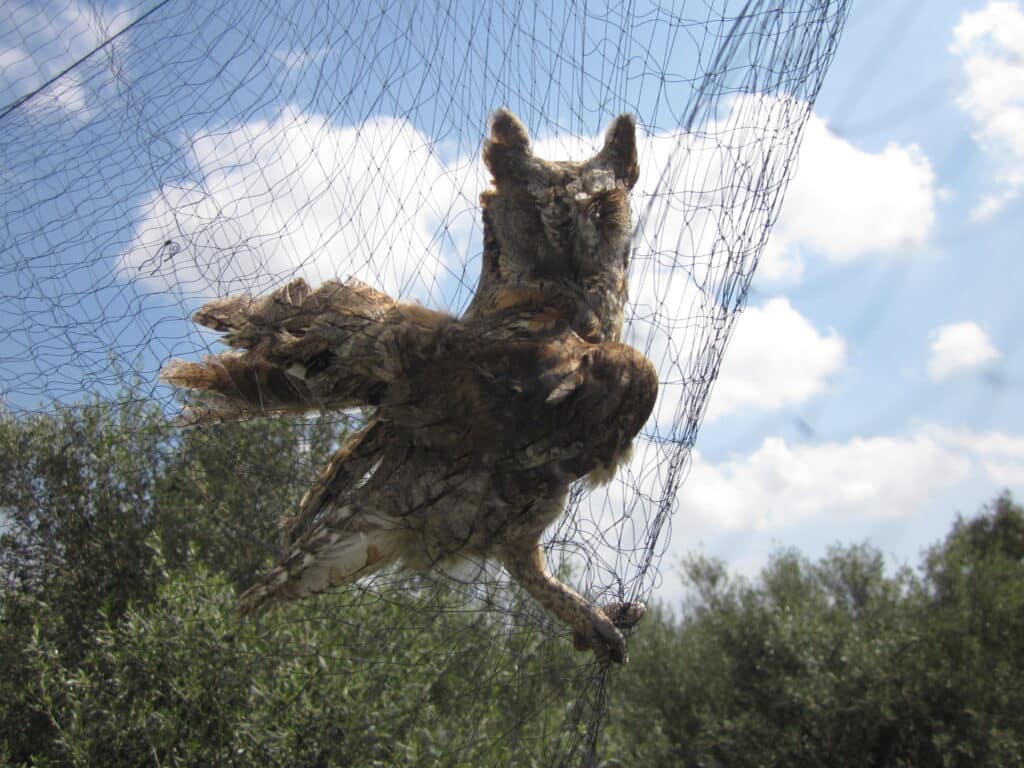
Laws are only as good as their enforcement. Accordingly, BirdLife partners create alliances with local authorities, police and other organisations as well as establishing volunteer networks to make enforcement easier. BirdLife Cyprus helped slash mist net use on Sovereign Base Areas by 94% from 2002-20, but after this period, trapping tragically resurged when the Government cut fines by 90%, thus reducing the financial deterrent.
In Spain, SEO/BirdLife worked with law enforcement agencies to train 1,500 national enforcement agents in wildlife crime investigation through its LIFE Nature Guardians project. In Tunisia, the Association Les Amis des Oiseaux (AAO, BirdLife Tunisia) helps the country’s hunting control unit to confiscate rifles, free illegally kept birds and prosecute crimes.
In Italy, “Lega Italiana Protezione Uccelli (LIPU, BirdLife partner) conducts many anti-poaching activities at several blackspots,” says LIPU’s Giovanni Albarella, “working alongside rangers and providing technical assistance and intelligence on the presence of poachers and prohibited decoys.” In Sardinia, for example, LIPU’s volunteers once destroyed around 400 illegally set traps on a typical autumn day. “There was great satisfaction in knowing that every trap destroyed is giving birds a better chance,” said David Lingard of LIPU UK. “Thanks to the work we have been carrying out for many years, the extent of poaching has decreased, especially in blackspots such as south Sardinia and the Messina Strait,” Giovanni says. “But it remains a major problem.”
Part of the issue is that enforcement resources are invariably at a premium. In the long term, altering attitudes can help minimise enforcement requirements, so BirdLife partners actively seek to change hearts and minds. On Greece’s Ionian Islands, HOS installed display boards at key poaching spots, raising awareness of the impact of shooting migratory birds. BirdLife Cyprus and SPNL each reach out to 2,000 children annually, while Lipu and Association BIOM (BirdLife Croatia) are close behind.
Knitting the various strands together, BirdLife has been instrumental in pushing the agenda of the illegal killing of birds in international fora. In 2020, government signatories to the Bern Convention and Convention on Migratory Species agreed on the Rome Strategic Plan 2020-30 – an initiative to eradicate bird poaching in the Mediterranean, starting with a commitment to at least halve illegal killing by 2030 and a long-term principle of zero tolerance of illegal killing, trapping and trade. Even some of the worst offenders – Italy, Cyprus and Malta – signed up.
BirdLife’s attention now turns to the tricky task of helping governments keep their promises. “Without constant pressure from LIPU and other NGOs, which plays an important deterrent function, poaching in Italy would resurge,” Giovanni Albarella observes. “Stopping illegal killing isn’t easy,” concludes Barend van Gemerden, BirdLife’s Global Flyways Programme Co-ordinator. “We need a lot of things in place. But we’ve achieved positive developments in many places. It’s now essential to press on and scale up our actions.”
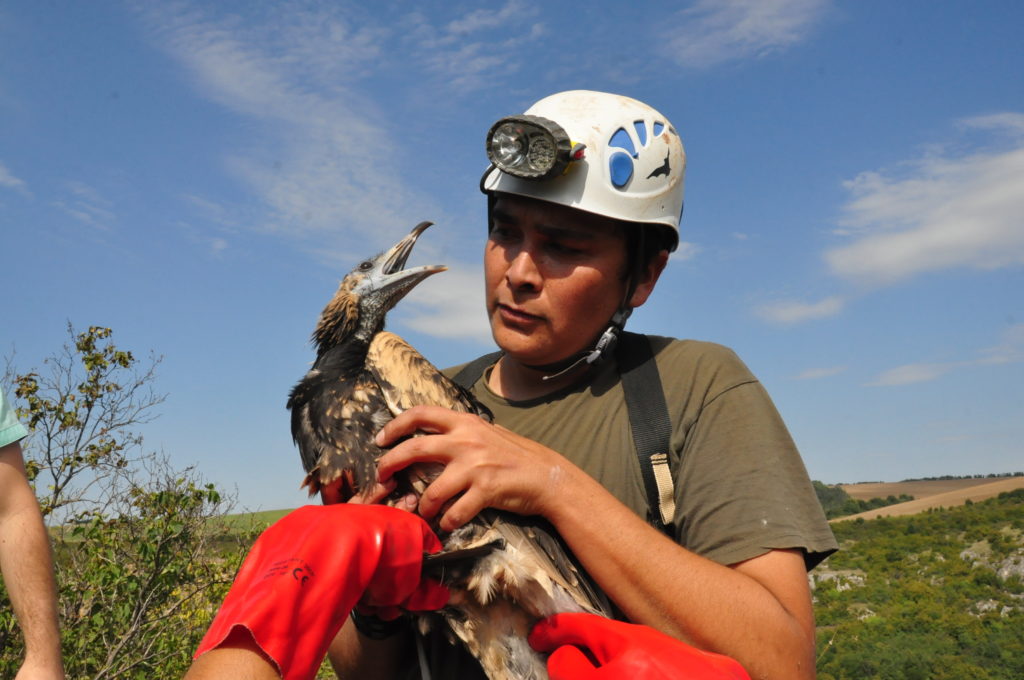
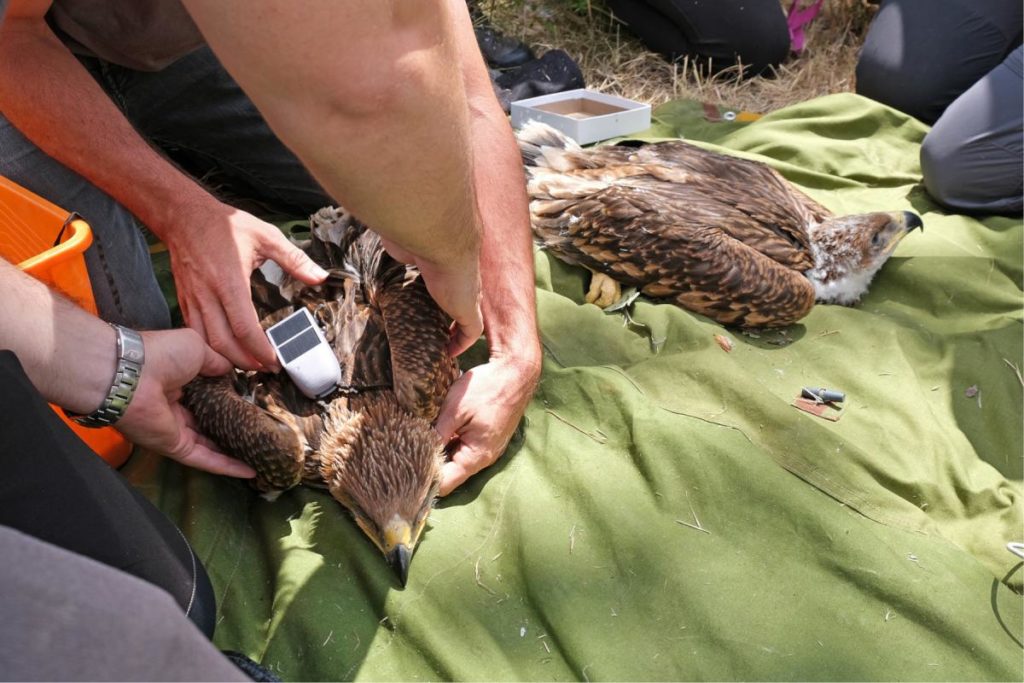
“Stopping illegal killing isn’t easy. We need a lot of things in place. But we’ve achieved positive developments in many places. It’s now essential to press on and scale up our actions.”Barend van Gemerden, BirdLife’s Global Flyways Programme Co-ordinator.
European Turtle-dove (Streptopelia turtur)
Description: Dainty dove with chestnut- fringed wing feathers, grey head, pink breast and white-edged black tail.
Distribution: Breeds in much of Europe, Central Asia, the Middle East and North Africa. Winters mainly in the Sahel of Africa.
Ecology: Breeds in a variety of woodland types; feeds on agricultural land, mainly eating seeds on the ground. Migratory, flying up to 700km at a time. Song is a distinctive purring.
Threats: Transformation of agricultural land, which reduces both food supply and availability of nesting habitat; hunting; disease
